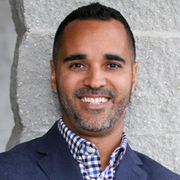Will Enterprise-Wide System Data Bulletproof Revenue Cycle?
- The world of revenue cycle management possibly involves more variables than an introductory algebra course. The process of getting a professional claim paid often involves the execution of allegedly miraculous events. Bullet proofing a claim is a solid solution. It is, nontheless, not exactly a simple solution. What are the best means to getting there?

Jose Rivera, CMPE, Corporate Director of Physician and Professional Services at Orlando Health, spoke with RevCycleIntelligence.com about how being able to successfully manage revenue cycle requires effective management strategies.
As the convoluted process of capturing a charge, rendering services, and proper coding is executed, Rivera recommends making sure claims are “as bulletproof as possible” once they reach the insurance carrier’s hands. Trying to get a claim passed through internal edits before it then overlaps into the realm of payers’ edits is often a difficult feat, he explains.
Revenue cycle for a claim begins when a patient schedules an appointment, says Rivera. “Nothing is guaranteed until the claim is actually received by the payer,” he says. How can the claim denial be prevented, especially with the prediction of massive claim rejection following the upcoming ICD-10 implementation? Perhaps with analytics and the promotion of actionable data.
“It all has to be wrapped around analytics and data,” explains Rivera. “We can’t manage and be efficient if we don’t have the data to allow us to direct our efforts and be able to work efficiently and as streamlined as possible and make sure that when a claim gets denied, we work that claim as fast as possible to get it right back into the insurance carrier’s hands. That takes a lot of data analytics,” he claims.
A patient may receive multiple bills for having a procedure done, says Rivera. Managing this dilemma requires the implementation of a strong analytics platform to track activity both on the hospital side and on the physician side, he states.
Considering the professional aspect of revenue cycle management, Rivera maintains there should be a keen focus on making sure key indicators align with acceptable best practices. “On a day-to-day, be able to work your accounts receivable and find new trends – when insurance carriers change their payer dialogue, which is common – and being able to pull data, not only to make business decisions but also to change your internal processes at a drop of a dime when you need to,” he explains.
“When physicians are employed by a healthcare organization, they want to know their full contribution to their employer,” Rivera maintains. “When the majority of our doctors are specialists, they want to be able to know not only their professional services, but also their contribution level to the organization with admitted cases and how they contribute to the hospital side,” he states.
“Pulling data from both a hospital and a physician perspective and making it manageable and meaningful is challenging in and of itself,” says Rivera. There is an imperative need to identify each case and each procedure, tied back to each physician and each facility and then bounced to a finance department, to best comprehend a physician’s collective contribution efforts to an organization, he states. Most organizations effectively do this, albeit via a one-sided focus on the hospital side, with little to no concentration on the physician realm, says Rivera.
Collecting this two-fold data into a centrally based repository to later meaningfully compile is very challenging, says Rivera. “It’s essentially trying to make two different systems that talk two different languages speak one common language,” he explains. “That’s not an easy feat.” Being part of an enterprise-wide system would make such efforts to aggregate information much easier, says Rivera.
“The industry has realized in the past few years an enterprise-wide system is the most beneficial to every organization,” says Rivera, adding that Orlando Health is perhaps a little late to the game, it is actively working to implement a singular system throughout the entire organization.
Dramatic change is on the horizon for revenue cycle management, says Rivera. “If you speak to any revenue cycle leader, within the next five to ten years, the process for reimbursement, which is predominately a fee-for-service area, is going to dramatically change,” says Rivera. “With accountable care in place and the notion that the industry is headed toward preventative healthcare population management, the platform for revenue cycle is going to take a turn for quality,” he explains.
The healthcare landscape is changing. Payments will be administered according to whether or not physicians hit quality metrics, he adds, in reference to recent efforts from the Centers for Medicare & Medicaid Services (CMS). “I think that we’ll see a resurgence of capitation,” Rivera claims. “The concept of an Accountable Care Organization is just that, that the provider or healthcare organization assumes the risk of making sure all of the quality indicators are met for reimbursement to take place,” he adds, in reference to CMS’s recent bundled payment initiatives.
What is the future of revenue cycle? Seamless clinical and financial absorption – referred to by Rivera as “clinancials.” “It’s up to the organization whether they’re profitable at the end of the day or not,” Rivera states. “That’s where I see our revenue cycle arena going. We have to adapt and start pulling clinical information and marrying that with financials to ensure organizations are hitting their marks in order to be profitable,” he adds.
As the healthcare industry progresses onwards to October’s ICD-10 implementation deadline, it is hopeful the concept of bulletproofing claims can become the norm instead of the exception.
